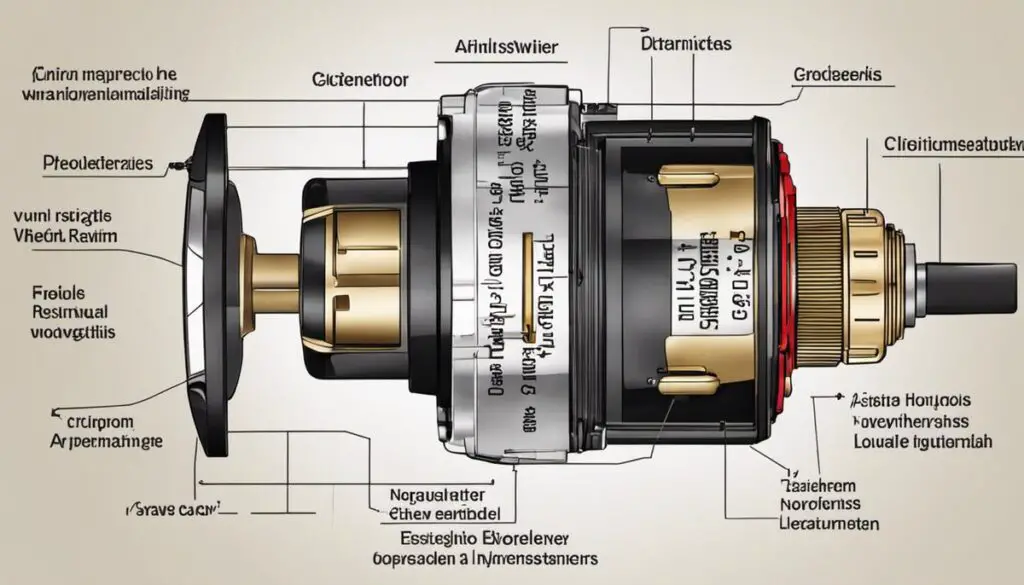In everyday operations of our vehicles, few things are as critical yet as undervalued as the ignition switch. This modest gadget plays a significant role in initiating a car’s entire electrical scheme. Owing to its significant role, recognising when it is faulty is essential to avoid getting stuck in an undesirable situation. This article delves deep into understanding the functions of the ignition switch, identifying symptoms of a faulty one, and importantly, how to bypass it in an emergency.
Understanding Ignition Switch Functions
Unveiling the Key Role of a Car’s Ignition Switch
Car enthusiasts, gearheads, and tech-lovers, gather round! Today, we’re going to drill down into an essential component of your car that might often go unnoticed: the ignition switch. The term may evoke images of a simple slot to insert your key and start the car, but do not be fooled—it does quite a bit more!
An ignition switch, often described as the car’s control hub, can be viewed as a bridge connecting the car’s electrical system and the starter. This seemingly innocuous component tackles multiple complex jobs, beginning with the core purpose of igniting the vehicle’s engine. But that’s just the most recognized task; let’s dive a little deeper into the underappreciated world of ignition switches, dissecting their operations and functions.
Initiating the Electrical System
The first primary job of an ignition switch is to power up the car’s electrical system. This commences when the key is inserted into the ignition switch and turned to the ‘Accessory’ or ‘ACC’ position. In this state, the electrical circuits associated with the car’s convenience features—like the radio and windows—receive power.
Ignition System and Fuel System Activation
Twisting the key from ‘ACC’ to ‘ON’ or ‘Run’ position vitalizes not just the accessories, but also the ignition and fuel systems. This is where the magic happens, as this action essentially readies the car to start. The ignition coil, which is responsible for igniting the fuel-air mixture in the engine, is activated. Simultaneously, the fuel pump comes to life, ensuring the engine is well-fed with fuel when you crank it.
Activating the Starter Motor
When the key is turned to the ‘Start’ or ‘Ignition’ position, the ignition switch unleashes power to the starter motor. The motor then cranks the engine, allowing it to fire up. Once the engine is running and the key is released, it reverts back to the ‘ON’ position, while the motor stops to preempt the engine’s damage.
Cutting Off the Power
Lastly, the ‘OFF’ or ‘Lock’ position of the ignition switch puts an end to all activity, closing the circuits that were powered up. This complete shutdown conserves battery life when the car is not in use.
Understanding these functions illuminates the centrality of the ignition switch to the vehicle’s efficient functioning. It is not merely about starting or stopping the engine—it’s about managing energy distribution across a variety of essential systems, a true testament to it being a fundamental cog in the automotive machine! So, next time your key turns in the ignition, take a moment to appreciate the elegance and effectiveness of this marvel of engineering. Your car wouldn’t go far without it!
With these insights in mind, consider the importance of maintaining and occasionally checking your ignition switch. A malfunctioning switch could disrupt the symphony of systems in your car, hindering its performance or, worse, leaving you stranded. As tech enthusiasts and car-lovers, fostering an understanding of such integral components not only fuels our curiosity but also aids us in ensuring our machines perform at their peak. Because, after all, knowledge is power—much like that provided by the mighty ignition switch.

Identifying Symptoms of a Bad Ignition Switch
Diagnosing a Faulty Ignition Switch: A Stepping Stone to Improved Car Maintenance
Any tech connoisseur would agree that strategically identifying and diagnosing an issue only adds to the efficiency of rectification, minimizing time and effort. This clever approach undoubtedly applies to the world of automotive tech, the often-underestimated ignition switch being a prime subject. Now, we lay down the nitty-gritty of identifying a faulty ignition switch for tech enthusiasts, those direct handling and experimental problem solvers at the forefront of the technology world.
Step 1: Monitoring Key Failures
The initial sign of a potentially faulty ignition switch can often be the key failing to turn. This may occur due to worn or damaged internal mechanisms and could certainly be a precursor to a greater issue lying beneath.
Step 2: Detecting Starter Motor Issues
Just as activating the starter motor implicitly involves the ignition switch, so does its malfunction. A repetitive clicking noise or the engine refusing to turn over is a significant red flag. These difficulties may indicate a faulty ignition switch, as it’s responsible for sending the vital start signal to the starter solenoid.
Step 3: Observing Power Discrepancies
Ever noticed your car’s lights flickering or power accessories functioning unpredictably? These could imply an inconsistent power supply waged from a problematic ignition switch – another check on the list of potential signs to watch for.
Step 4: Gauging Heat Levels
Excessive heat from the ignition switch is not an optimistic sign. It can hint towards a fault by revealing internal electrical problems that may even lead to potential fire hazards.
Step 5: Considering Combustion Inconsistencies
Smooth functioning of the ignition and fuel systems is critical for combustion. However, if your vehicle’s engine either stutters or fails completely while driving, it could be an indication of the ignition switch interrupting the power supply.
Addressing a faulty ignition switch at its inception could be instrumental in preventing a ripple effect of consequential issues. Tech enthusiasts understand the value of preventive maintenance: knowing what to look for and when to take action reduces any long-term negative impact. This logical and proactive approach is not only the key to good car maintenance but also a testament to the analytical mindset that technology enthusiasts possess. It’s quite the adventure to decode and diagnose such issues, and there’s no doubt that the tech enthusiast within you is up for the challenge.

Bypassing a Bad Ignition Switch
Continuing from earlier, we’ll uncover the method to bypass a faulty ignition switch to start a car—a handy solution when the unpredictable strikes. Before diving in, it’s crucial to note that this method is an interim solution or for scenarios when you cannot reach a professional mechanic or dealer support. Persistently bypassing your ignition switch is not advocated due to safety reasons and can potentially damage your vehicle’s electrical system.
Now, onto the approach. The procedure involves using a process called ‘hot wiring’.
How to Hotwire a Car:
- Locate the Ignition Wires: Behind the ignition cylinder, you’ll find the ignition wires. Typically, these are grouped together and can be colored red, brown, and pink/white based on standard coding.
- Disconnect Battery: Before manipulating any wires, disconnect the car battery to avoid electrical hazards. This disruption will be brief—the positive terminal returns to the battery once action starts.
- Access Ignition Wires: After the battery disconnects, remove the car’s ignition switch panel. You can do this using a flat-headed screwdriver to pry the cover off gently from the dashboard. Proceed with caution to avoid causing any damage.
- Identify the Battery Wires: The aim here is to connect the ignition wires (typically red) to the battery wires (often brown). Strip about half an inch of insulation from these two sets of wires — a wire stripper or knife goes well here — to expose metal wires inside.
- Connect the Battery Wires to the Ignition Wires: Once exposed, twist the ignition and battery wires together. This sends the electricity straight to the car’s dashboard, activating the electrical components without the need of a functional switch.
- Locate the Starter Wires to Ignite the Vehicle: Now, look for the starter wires—typically a white colored set. Contact the already conjoined ignition/battery wires with the stripped starter wires only briefly. Your car should roar to life. Prompt release of the contact is paramount here; sustained application can damage the starter.
- Reconnect the Battery: As soon as the vehicle starts, reconnect the positive terminal to the battery.
- Secure the Wires: Finally, secure the combined wires using electrician’s tape. For the time being, this prevents the connection from coming apart when driving.
Remember, this method is temporary and not a green light to bypass the ignition switch indefinitely. For a long-term fix, you should seek service from a professional mechanic to replace or repair a faulty ignition switch. Avoid turning this quick fix into a permanent routine, as it can bring about myriad electrical complications. Stay smart, stay safe.

Photo by dhivakrishna on Unsplash
Understanding ignition switches and how to troubleshoot them can make a considerable difference in your daily vehicle operations or even during unforeseen circumstances. Fusing practical knowledge with mechanical initiative equips you for situations when your car’s ignition switch flounders. Remember, your safety is paramount, so always consider professional assistance if you’re uncertain. By taking the right steps and gaining this essential knowledge, you’re not only becoming more auto-informed but also preparing yourself to handle auto emergencies adeptly.

Tomas is a retired Chevy Auto Technician that brings decades of hands-on experience and expertise to the table. He’s also a father to two incredible daughters. He enjoys using his knowledge and experience to help you solve and find reliable information on Chevrolet vehicles. Whether it’s troubleshooting engine problems or providing tips for maintenance, Thomas is committed to helping Chevy owners keep their vehicles running smoothly and safely.




